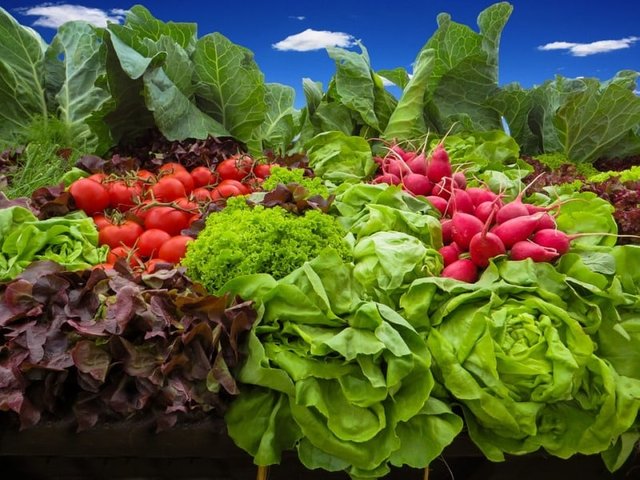Cultivating Health: A Comprehensive Guide to Fruits and Vegetables Farming
Introduction
Fruits and vegetables farming is a vital component of global agriculture, playing a crucial role in food security, nutrition, and rural livelihoods. With increasing awareness of healthy eating and the demand for fresh produce, this sector is witnessing a resurgence in both traditional and modern farming practices. Whether practiced on a small plot of land or large-scale commercial farms, fruit and vegetable farming offers diverse opportunities for innovation, sustainability, and community impact.
The Importance of Fruits and Vegetables in Agriculture
Fruits and vegetables are not just culinary essentials—they are powerhouses of vitamins, minerals, fiber, and antioxidants. They contribute to improved immune systems, reduced risk of chronic diseases, and better overall health. From an economic perspective, these crops offer high-value returns compared to staple cereals and can be harvested multiple times a year in many regions, making them attractive to farmers.
Key Elements of Successful Fruits and Vegetables Farming
1. Site Selection and Soil Preparation
Selecting the right site is crucial. Most fruits and vegetables thrive in well-drained, fertile soils with good sunlight. Soil testing helps determine the pH and nutrient levels, which can be adjusted through organic or chemical amendments.
2. Crop Selection
Choosing the right crops depends on climate, market demand, and the farmer’s resources. Popular fruits include apples, bananas, citrus, berries, and mangoes, while staple vegetables often include tomatoes, carrots, lettuce, onions, and peppers.
3. Seed Quality and Propagation
High-quality seeds or planting materials ensure better yields and disease resistance. Many fruit crops are propagated through grafting or budding to maintain specific characteristics, while vegetables are typically grown from seeds.
4. Irrigation and Water Management
Water is a critical input, especially in regions with irregular rainfall. Drip irrigation and sprinkler systems help conserve water and deliver it efficiently to plants, minimizing waste and promoting healthier growth.
5. Pest and Disease Management
Integrated Pest Management (IPM) combines cultural, biological, and chemical practices to manage pests sustainably. Regular monitoring, crop rotation, and using natural predators can reduce the need for chemical pesticides.
6. Harvesting and Post-Harvest Handling
Timely harvesting ensures maximum flavor and nutritional value. Post-harvest handling—such as cleaning, sorting, grading, and packaging—is essential for maintaining quality and reducing losses.
Modern Trends in Fruits and Vegetables Farming
Organic and Sustainable Farming
Consumers are increasingly demanding organic produce. Sustainable practices, such as composting, reduced pesticide use, and biodiversity conservation, are becoming standard in modern farming.Hydroponics and Vertical Farming
Urban areas are witnessing a boom in soilless farming techniques like hydroponics and vertical farming, which maximize space and resource efficiency.Smart Agriculture
Use of drones, AI, and IoT devices for monitoring crop health, soil conditions, and weather patterns is enhancing decision-making and improving productivity.
Challenges in Fruits and Vegetables Farming
Despite its potential, this sector faces several challenges:
Climate change and erratic weather patterns
Pests and diseases
Limited access to quality inputs and financing
Poor infrastructure for storage and transportation
Market volatility and price fluctuations
Addressing these issues requires coordinated efforts between governments, private sector players, and farming communities.
The Role of Community and Innovation: Enter Eco Farming Daily
In recent years, digital platforms have begun to revolutionize how farmers access knowledge and support. Eco Farming Daily is one such community-driven initiative that empowers modern growers with tools, insights, and a supportive network. By connecting fruit and vegetable farmers with experts, resources, and fellow cultivators, Eco Farming Daily is bridging the gap between traditional practices and modern agricultural innovation.
Through tailored advice, sustainable farming tips, and real-time problem-solving, Eco Farming Daily is helping usher in a new era of smart, inclusive, and resilient farming communities. It's more than just a platform—it's a growing movement toward healthier produce and healthier farms.
Conclusion
Fruits and vegetables farming is more than just planting and harvesting—it's a lifeline for healthy living and sustainable agriculture. As the sector evolves, the blend of time-tested methods and technological innovations is key to overcoming challenges and maximizing potential. Communities like Eco Farming Daily are at the forefront of this transformation, ensuring that every farmer, from urban rooftop growers to rural landowners, has the support they need to thrive.
